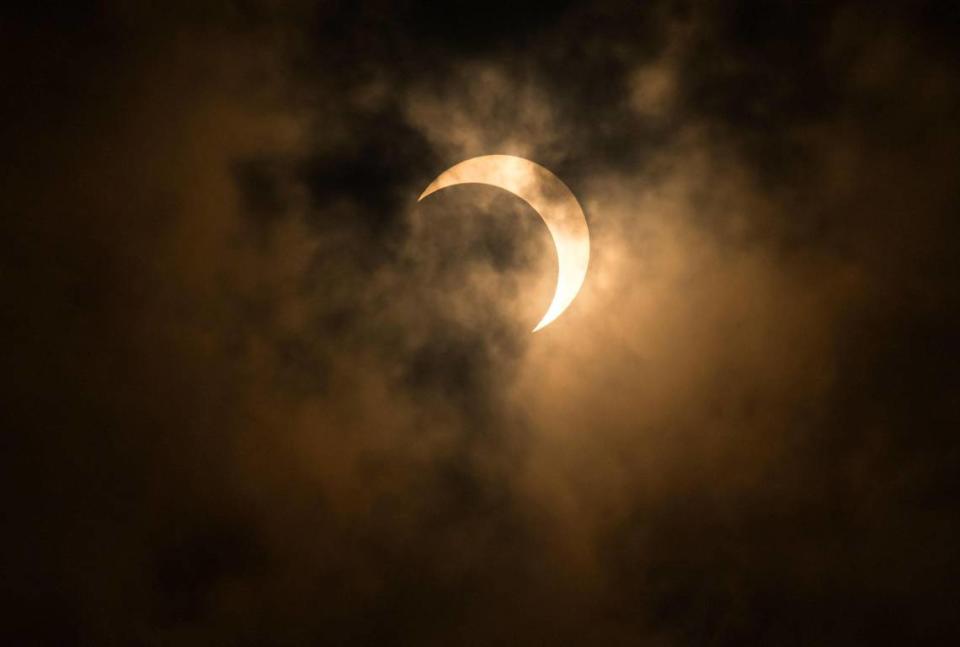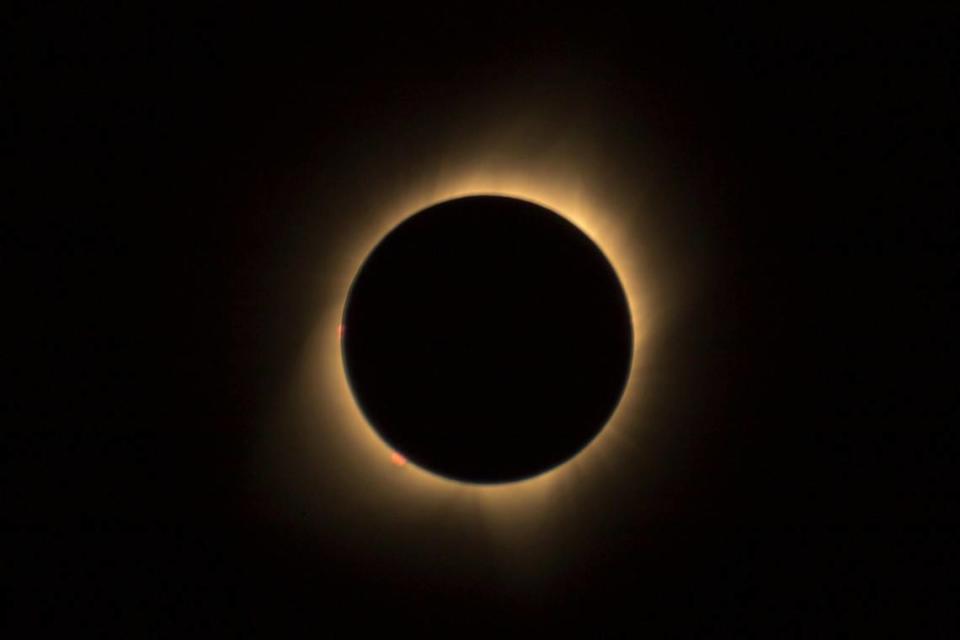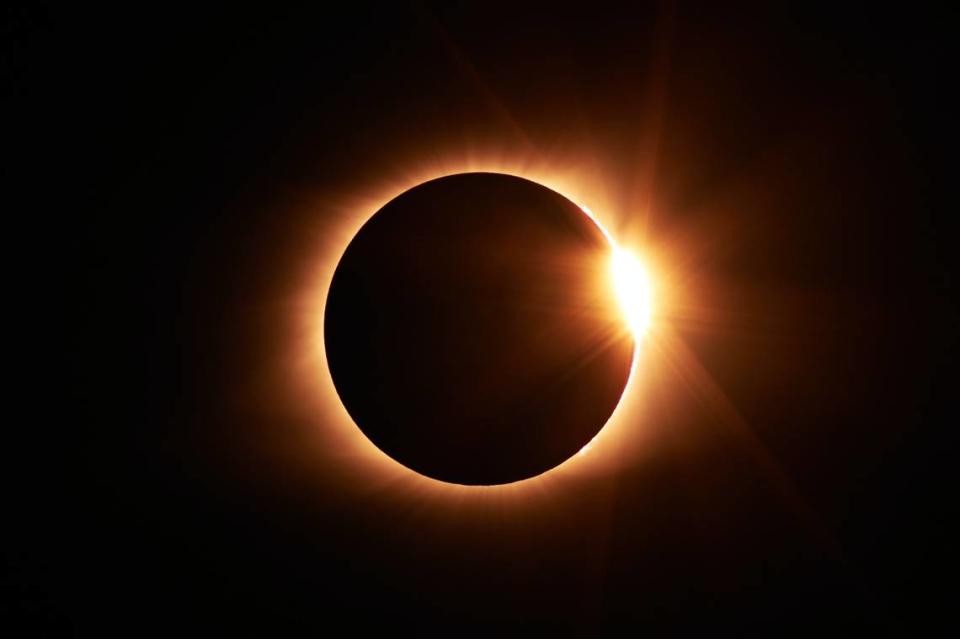When will total solar eclipse be visible in California? How much of it will we see?
Although California won’t experience the upcoming solar eclipse in its full glory, there will be chances to get a glimpse of it.
Parts of the United States are bracing for the total solar eclipse expected on Monday, April 8.
The moon will fully block the sun as it passes over a significant swatch of Mexico, the United States and Canada, according to NASA.
“It will be the last total solar eclipse visible from the contiguous United States until 2044,” NASA said.
What is a total solar eclipse?
According to NASA, a total solar eclipse occurs when the moon passes in between the sun and Earth, blocking the face of the sun.
For places in the path of totality where the total solar eclipse can be fully seen, the sky will darken in the middle of the day and it’ll look like it’s dusk or very early dawn outside.

What will California see during solar eclipse?
Also known as the Great North American Eclipse, the astronomical event is expected to appear as a partial eclipse for other parts of the U.S., including California.
According to NationalEclipse.com, San Diego may see 53.9% of the eclipse as it sweeps northward, while Los Angeles may see 48.9% of the eclipse.
San Luis Obispo will see a partial solar eclipse of nearly 41.6%, peaking at 11:11 a.m., according to an interactive map by National Solar Observatory.
In Fresno, about 40.6% of the sun will be covered at 11:14 a.m., while Merced will experience a partial eclipse of 38.3% and Modesto will see about 36.8% around the same time.
San Francisco may see about 34%, NationalEclipse.com said.
Those in Sacramento may also notice a shadow of a partial eclipse.
“Similar to San Francisco, we can only expect about 35% coverage of the sun, even at the peak,” said Kyle Watters, a professor of physics and astronomy at Sacramento State.
Watters said the moon will cover a sliver of the sun at around 10:15 a.m. and will reach its maximum coverage around 11:15 a.m. It’ll leave the sun and end the partial eclipse around 12:15 p.m.
“It’s going to be our last chance to see a solar eclipse from here in Sacramento for quite a while,” Watters said.
If you plan to watch, Watters warns that the partial eclipse means the sun will never be safe to look at. He advises people to wear eclipse glasses or viewers when watching the event at all times in California.

What’s in the path of totality?
The NSO interactive map shows the path of totality that stretches from Mexico to the United States.
Mexico’s Pacific Coast will be the first location in North America to see the eclipse totality, at 11 a.m., Pacific Time.
“The path of the eclipse continues from Mexico,” NASA said, “entering the United States in Texas, and traveling through Oklahoma, Arkansas, Missouri, Illinois, Kentucky, Indiana, Ohio, Pennsylvania, New York, Vermont, New Hampshire, and Maine.”
It’ll end in Newfoundland, Canada, at 5:16 p.m. local time — or 12:46 p.m. Pacific Time.

East Coast will see ‘fireballs’ in the sky
NASA will be doing research at the same time of the April 8 eclipse.
“Three sounding rockets will launch before, during, and after the peak local eclipse to study how Earth’s upper atmosphere is affected when sunlight momentarily dims over a portion of the planet,” NASA said in a news release.
The rockets will be launched at Virginia’s Wallops Flight Facility.
Those around Pennsylvania to North Carolina, eastern Tennessee, Kentucky and Ohio may see multiple streaks of fire in the sky.
Californians, however, won’t be able to see the fireballs, Watters said.
What do you want to know about life in Sacramento? Ask our service journalism team your top-of-mind questions in the module below or email servicejournalists@sacbee.com.

